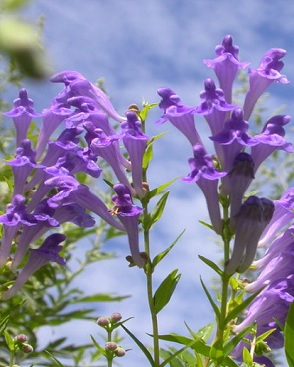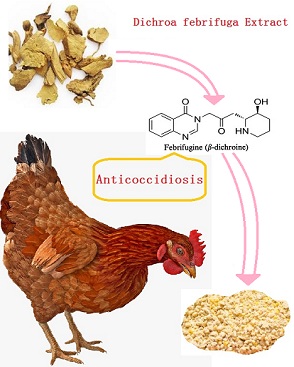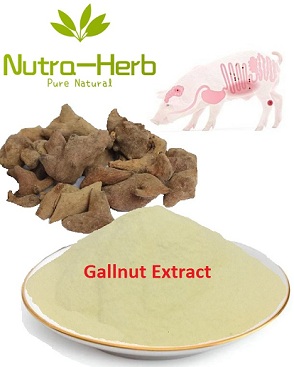- Plant-Based Protein
- Natural Plant Flavours
- Food and Dietary Supplement Ingredients
- Fruit Juice Powder
- Animal Nutrition Ingredients
- Water Soluble Ingredients
- Cosmetic Ingredients
- Unveiling the Therapeutic Potential of Rabdosia Rubescens: A Comprehensive Review
- What are the medicinal properties of Rabdosia Rubescens?
- Nutritional value of Orange Juice Powder compared to fresh orange juice.
- Processing Conditions and Nutritional Value of Orange Juice Powder
- Exploring the Versatility of Herbal Extracts in Food Flavors
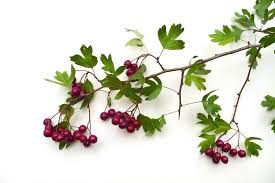
What are the health benefits of hawthorn leaf?
Welcome to our blog! Today, we are diving into the world of hawthorn leaf and uncovering its incredible health benefits. Whether you're a fan of herbal remedies or simply curious about natural alternatives, hawthorn leaf is definitely worth exploring.
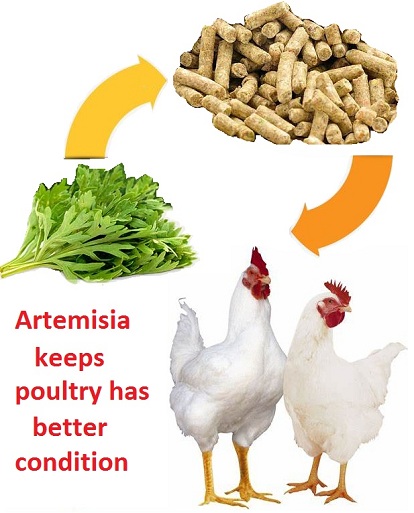

Medicinal herb-Artemisia,Antibacterial, Anticoccidiosis,Use for poultry and livestock industry
Artemisia species produces artemisinin, an active ingredient in malaria treatments. It also has antibacterial properties that may fight bacterial infections and control parasites in poultry. Artemisia leaf and extract have anticoccidial effects. And has inhibitory effects on Clostridium perfringens in vivo studies , the bacteria causing necrotic enteritis. The combinatorial effects on both coccidiosis and necrotic enteritis have become more important since several antibiotics against Clostridium perfringens have been banned in the poultry production in the EU, e.g. flavomycin. Artemisia can be made of a good feed additives.In the international situation of total prohibition of antibiotics, artemisia can be used as an alternative to antibiotics.
Background
Use of herbal feed additive is gaining importance in animal production due to ban on use of certain antibiotics, harmful residual effects and cost effectiveness. A number of feed additives like probiotics, prebiotics, organic acids and plant extracts have been found to have beneficial effects on animal production. Medical herbs properties to improve digestibility, antimicrobial, anti-inflammatory, anti-oxidant and immune-stimulant activity must be exploited in feeding of animals as well as safe food product for human beings.
Parasitic and bacterial infections are causing large production losses and economic costs in the world broiler industry. The parasitic infection coccidiosis is estimated to cost € 285 million annually at EU level. Almost similar costs are inflicted by the bacteria causing necrotic enteritis.
The main treatment of coccidiosis, necrotic enteritis and the parasite infection histomoniasis is a prophylactic use of in-feed antibiotic and synthetic coccidiostats and histomonostats. Due to the risk of development of resistance to these therapeutic agents as well as drug residues in food products, the EU is considering phasing them out, as it was done for antibiotics as growth promoters in 2006.
The plant Artemisia annua L. has been shown to have positive effects on the various broiler diseases, not least coccidiosis, due to the antimicrobial activity of the active compound artemisinin and the essential oils produced in the leaves of the plant.
In the international situation of total prohibition of antibiotics, artemisia can be used as an alternative to antibiotics.
What you may get from us: If you're developing a feed additive that contains medicinal herb of Artemisia Species.I think you can find the information or products you need here.
Simple production process in our factory: After the plant is collected, It can be made straight powder. Or the raw material will be processed by solvent extraction, separation and purification, filtration, concentration, drying and other steps to form the final products. We may also design a prouction process based on your special requirements.
Through the physical and chemical processes, those compunds you don't want was removed, and the compunds preferred was accumulated. Which make the products achieve the best effects.
|
Artemisia Straight powder or Artemisia Extract |
||
|
Appearance |
Powder |
|
|
Color |
Brown |
|
|
Partical size |
Normally pass through 60mesh |
|
|
Pack size |
25 kg per paper drum |
|
|
Purity of active compunds |
Depends on your requriement |
By HPLC |
|
For pricing or more information, please call 86 29 88444632 or send an email to Sales@nutraherbsource.com.
|
||
General Information of Artemisia species:
Commnon Name: Also known as sweet wormwood, sweet annie, sweet sagewort, annual mugwort or annual wormwood.
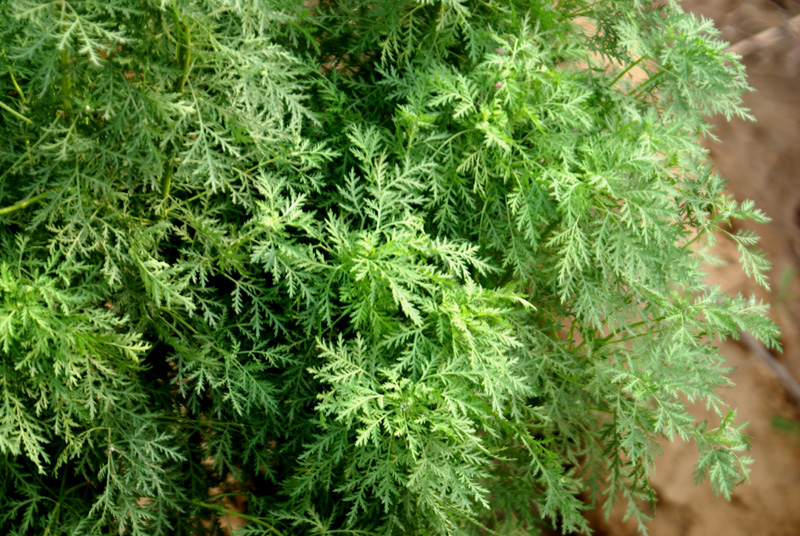
Artemisia species (spp.) are rich source of terpenes, antioxidant phenolics and flavonoids, among other biologically-active compounds. The genus Artemisia has been investigated for its anthelmintic and antioxidant compounds. Artemisia annua is a notable exception due to the production of the antimalarial compound artemisinin. These compounds can help parasitized animals to neutralize free radicals that form in their blood, boost their immune system, and help them fight gastrointestinal parasites. The genus artemisia is as a potential source of antioxidant and anthelmintic compounds. Some Artemisia spp. had higher antioxidant capacity than conventional forages with some, e.g. A. annua, being a good source of minerals, protein, and antioxidants. The anthelmintic activity of artemisinin-related drugs, dry , leaves, and alcoholic extracts of Artemisia spp. encompass Schistosoma, Fasciola, Tiypanosoma, Eimeria (coccidia), Trichostrongylus, and Haemonchus.
The genus Artemisia belongs to the family Compositae (Asteraceae) and has over 300 species spread worldwide. Plants from this family are a rich source of sesquiterpene lactones, a class of natural compounds with several proved medicinal effects, including anthelmintic effect. Artemisia annua (annual wormwood) has been given the most attention in the past 36 years due to the pharmacological use of artemisinin (the main sesquiterpene produced by the plant) as an antimalarial recommended by the World Health Organization to treat quinine-resistant malaria in over 50 countries in Africa, Asia, and South America. Artemisinin's second most reported use is as an anti-cancer drug. In the past 8-10 years, new medicinal benefits were reported for several Artemisia species (spp.) due to the anti-parasitic effects of artemiinin-based compounds and the high antioxidant capacity of crude extracts of some plants of this genus. Besides artemisinin, Artemisia .spp. are rich sources of sesquiterpene lactones and antioxidant compounds (flavonoids, .phenolic acids, etc.) with potential benefits to human and animal health.
Current published research shows that artemisinin drugs are effective against Leishmania, Tiypanosoma , and some viruses that affect humans. In animals, the antiparasitic activity of Artemisia spp. and artemisinin applies to several parasitic organisms including Fasciola, Eimeria (coccidia), Trichostrongylus, and Haemonchus.
Gastrointestinal nematodes represent a major economic hurdle in ruminant systems, and anthelmintics are estimated to account for 53% of the total costs of veterinary drugs worldwide. Haemonchus contortus, a gastrointestinal nematodes of the abomasum, leads in animal losses and is fast becoming multi-drug resistant in several regions of the world.. The focus of our research group at the Agricultural Research Service, USDA, is to find alternative plants that, when fed as forage or forage supplements, have the potential to improve the health of small ruminants in grazing systems. These compounds can work as anthelmintics, directly (affecting larval establishment, larval motility, mortality, decreasing fecal egg output, impairing worm development, and decreasing egg hatchability from feces) or indirectly (balancing antioxidant blood levels, improving the nutritional status, and boosting the immune system of parasitized animals fed these plant materials).
The health effect of Artemisia on poultry and livestock
Anticoccidial activity
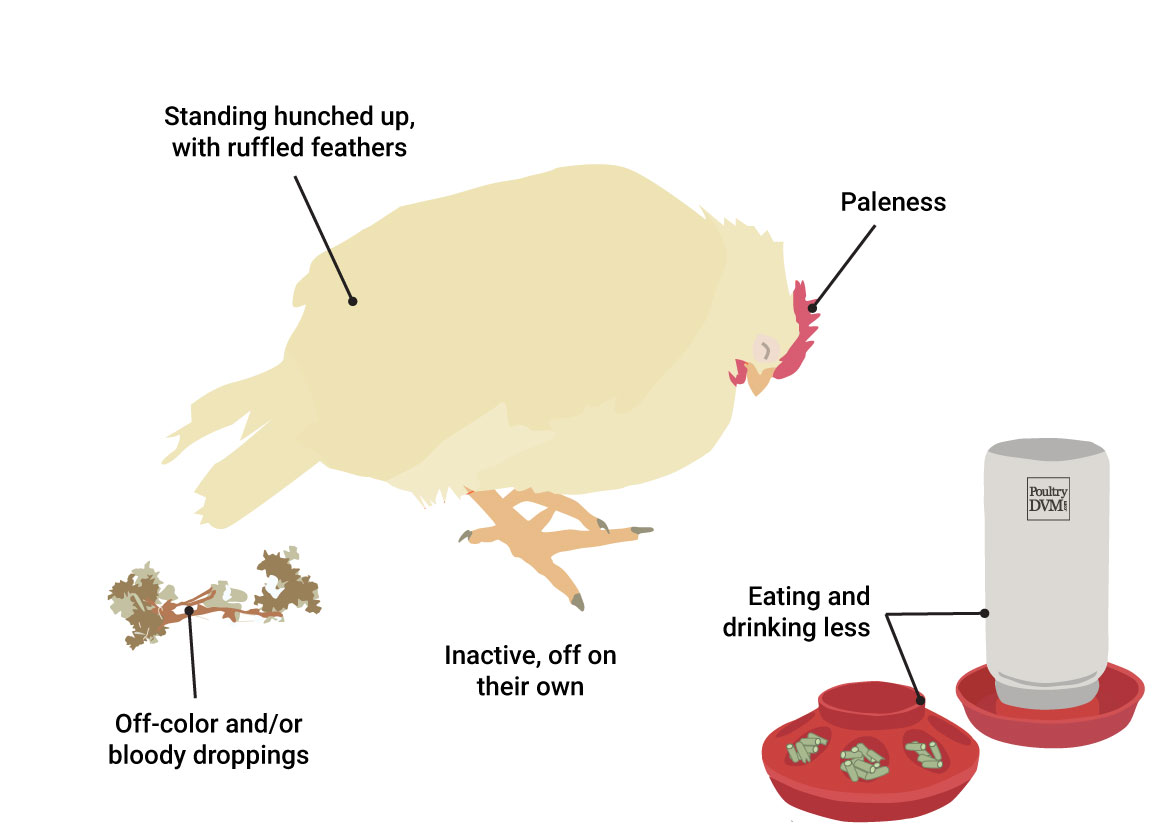
Artemisia has certain anticoccidial activity. Dried Artemisia annua leaves and several of their chemical constituents for possible use as prophylactic feed additives. When fed over a period of 3 weeks at a level of 5%, a dried leaf supplement of Artemisia annua provided significant protection against lesions due to Eimeria tenella. When fed over a period of 5 weeks at a level of 1% to chicks undergoing immunization with a live vaccine, it provided significant protection in partially immunized chicks against Eimeria acervulina and Eimeria tenella lesions from a dual species challenge infection. It also afforded lower mean lesion scores in challenged chicks immunized over a period of 5 weeks. Artemisinin, an antimalarial component of Artemisia annua, was present at a level of 0.034% in the dried leaf preparation. A 5% supplement thus afforded about 17 ppm artemisin. When the supplement was fed to chicks for a period of 3 weeks, it protected weight gains and significantly reduced lesion scores attributable to Eimeria tenella. Other components of Artemisia annua, camphor and 1,8-cineole, at 119 ppm also protected weight gains, and reduced Eimeria tenella lesion scores. Camphor reduced Eimeria acervulina lesions. Artemisinin fed for 4 weeks at levels of 2, 8.5, and 17 ppm significantly reduced oocyst output from separate Eimeria acervulina and Eimeria tenella infections and a dual species infection.
Several studies have found anticoccidial effects of extracts of Artemisia annua and other Artemisia spp. Furthermore, Artemisia annua has inhibitory effects on Clostridium perfringens in vivo studies , the bacteria causing necrotic enteritis. The combinatorial effects on both coccidiosis and necrotic enteritis have become more important since several antibiotics against Clostridium perfringens have been banned in the poultry production in the EU, e.g. flavomycin.
Anti-parasitic activity
Artemisia species have reported with strong anthelmintic and anti- parasitic activity. Study shows that polar extracts obtained with water or ethanol have a greater anthelmintic activity than non-polar extracts obtained with hexane, which usually have low or-no anthelmintic activity. These results indicate that antioxidant flavonoids (hydrophilic fraction) might play a role in anthelmintic activity.
Antioxidant activity
Artemisia spp. have high content of flavonoid and phenolic compounds that are associated with their high antioxidant capacity. Artemisia spp. can score 50% or more of the total antioxidant capacity (TAC) measured by the oxygen radical absorbance capacity (ORAC) test. There is indication that the fiavonoids and phenolic acids found in leaves and crude alcoholic extracts have medicinal effects on their own, such as antioxidant and anticancer, or have synergistic effects with other medicinal compounds present in the plant, increasing their absorption; pharmacological activity, and permanence in the human or animal subject consuming the plant or extract. Recently, plant materials with high antioxidant capacity such as Artemisia afra tops and grape seeds were found to attenuate coccidian infection in chickens and even increased the body weight of infected birds, similar to chickens in a control diet . Artemisia annua leaves and crude extracts have been reported to be a good source of antioxidants, being among the four medicinal plants with the highest ORAC level among other Chinese medicinal plants. This high antioxidant capacity was attributed to the high content and diversity of its leaf flavonoids, including C-glycosyl flavonoids as a possible component of the antioxidant and antiviral activity. Flavonoids have been reported to be responsible for more of the antioxidant activity of leafy vegetables and herbs than vitamin E, C, or glutathione. Although the antimalarial activity of A. annua is mostly attributed to artemisinin, flavonoids from whole plant extracts also had antimalarial activity.
Antibacterial activity
A. Addo-Mensah et al. research shows: Artemisia vulgaris were extracted sequentially via Soxhlet extract using petroleum ether, acetone and 90% ethanol on water respectively. Antimicrobial activity of these extracts was tested against Staphylococcus aureus , Methicillin Resistant Staphylococcus aureus and Bacillus subtilis using the disc diffusion method. Whereas acetone extract exhibited high antimicrobial activity (5 mg mL–1 against B. subtilis, 25 mg mL–1 against Methicillin Resistant Staphylococcus aureus and 5 mg mL–1 against S. aureus), the ethanol extract showed very moderate activity (25 mg mL–1 against B. subtilis 50 mg mL–1 against S. aureus and no activity against Methicillin Resistant Staphylococcus aureus). Diminished or lack of antibacterial activity from the ethanol extract reported in this study conflicts previous studies which report higher antimicrobial activity in ethanolic extracts. Findings in this study therefore suggest that the active antimicrobial agents in Artemisia vulgaris can be extracted better acetone than with ethanol.
Immunomodulatory Potential
Pushpa Ruwali et al. research shows:Chicken splenocytes were isolated from spleens collected from healthy birds; lymphocytes were separated by density gradient centrifugation, percentage cell viability determined and final cell count adjusted to 10-7 cells/ml in RPMI-1640 medium. maximum non-cytotoxic dose of Artemisia extract in chicken lymphocytes was determined through 3-(4,5-dimethylthiazol-2-y1)-2,5-diphenyltetrazolium bromide dye reduction assay. Immunomodulatory potential of Artemisia extract was evaluated through lymphocytes proliferation or B and T cells blastogenesis assay in the presence of appropriate mitogens, namely, lipopolysaccharide and concanavalin A , respectively.
Results: Maximum concentration of Artemisia extract exhibiting 100% cell viability (MNCD) was 200 μg/ml and was selected for further in vitro analysis. The in vitro exposure of chicken lymphocytes to 200 μg/ml dose of Artemisia extract, resulted in significant (p<0.05) upregulation of 11.76% in B cell proliferation in the presence of B cell mitogen lipopolysaccharide and a significant (p<0.05) increase of 12.018% T cells proliferation in the presence of the mitogen concanavalin A, as compared to the control.
Conclusion: The significant upregulation in the proliferation of two major cell types modulating the immune system is an indication of the immunostimulatory potential of the plant.
Dosage:
Positive effects on coccidiosis with a daily intake of Artemisia leaves straight powder corresponding to no less than 5 g of dried leaves per kg feed.
Added 200 and 300 mg artemisia extract per kg feed and found a dosage dependent, anticoccidial effect. The 300 mg/kg feed corresponds to approx. 3,0 g extract powder per kg feed.
- Prev:Medicinal herb-Brucea Javanica,Antibacterial, Anti influenza, Anticoccidiosis,poultry health
- Next:Agrimonia Extract, Avian disease,Antibacterial, Antidiarrheal,Anticoccidiosis in poultry industry



